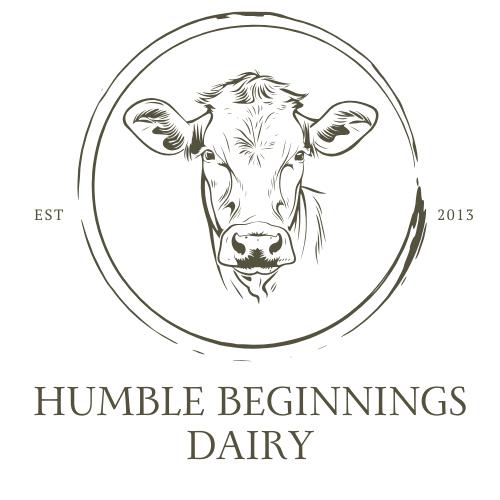From Dusty to Drowned Out
One thing above all others will be burned into my memory of the last 4 summers: extreme weather.
When your life and livelihood don’t depend on the weather, you notice it enough to complain about it messing up your plans. Maybe a BBQ got rained out, or that landscaping project had to get postponed. Your hair got wet when you had to run from the car to the store, and you’re disappointed because you were having such a good hair day (speaking from personal experience here!).
While annoying, those things won’t make or break you. They don’t have the power to end a generations-long legacy. They don’t result in you losing a business - or your home.
For us, all of those things are wrapped up in the weather - something we have absolutely no control over. Our families have been farmers for at least 4 generations before us. We’ve spent 10 years building a business from nothing - investing hundreds of thousands and countless hours as well as blood, sweat, and tears. Our farm is also our family’s home - it’s our place of peace and shelter from the world. It’s where we feel freedom and security.
And we’ve had to fight for it in many ways (upcoming blog about the latest attack on raw milk). Our most formidable opponent recently - the weather. Specifically rain, or lack thereof.
For the last 3 years, we have been in a drought. Our rainfall was pitiful, and it was frequently hot and windy. I didn’t write down our rainfall totals in 2021 or 2022, but I did in 2023. From May-September, we had 9.5 inches. Right now, we’re sitting at 16 inches - in only 6 weeks.
I’ve been praying and praying for no drought this year. And while too little rain brings lots of problems, the opposite - too much - also brings its own set of problems.
Normally, our cows eat strictly green pasture grass from May 15th-ish to September/October - whenever the grass goes dormant and runs out. The rest of the year, they eat hay (a combination of grass that we cut, dried, and baled - and alfalfa that we purchase from another farmer).
From 2021-2023, we were feeding the cows hay starting mid-June or early July - months earlier than we should have. It was so dry and hot, the pasture didn’t regrow after they grazed. And in 2023, an Armyworm infestation ate a large amount of our grass as well.
This year, we’ve had moisture and we were looking forward to them being on 100% pasture. But Mother Nature has decided to throw a different wrench into the works this year - and instead flood our cows’ food.
The paddocks they have eaten down are the dry ones, and the ones they should be moving into to eat now, are the flooded ones. We have to wait for the water to recede and the mud to dry before they can move in and graze there, or they will destroy the pasture. 1,000 pounds of animal on only 4 small hooves can do some serious damage when it’s muddy.
Normally we cut and bale hay 3 times a year: early June, mid/late July, and mid-September. There are tons and tons of hay in our field right now, but we won’t even be able to get in to cut it for weeks yet.
The reason our land was already all grass when we moved here is because it is considered unsuitable to grow annual crops like corn and beans. It is low ground that stays wet longer than usual. The middle of our hay field is impossible to get through with a tractor when it’s this muddy, and with the amount of water there now, we’re guessing it will be weeks before we can make hay - if the weather dries up.
We’re also not sure how this level of flooding will affect the grass. We’ve actually never dealt with this before. How long will it take to dry up? Will the grass die? Will the nutritional value change? Will it wilt and lay down? Which will make it impossible to cut. It has to be standing upright.
After the stress and devastation of those drought years, I don’t want to complain about rain. At all. But we are praying for weather that is dry enough for us to get our hay made, and to dry up the pastures so we don’t have to buy hay to feed our cows AGAIN - yet not so dry that the grass won’t grow. In short, we’re praying for some moderation in the weather. And the wisdom to know how to navigate this new challenge.
If you haven’t been to the farm in the last couple of days, you can see the flooding here on our YouTube page:

